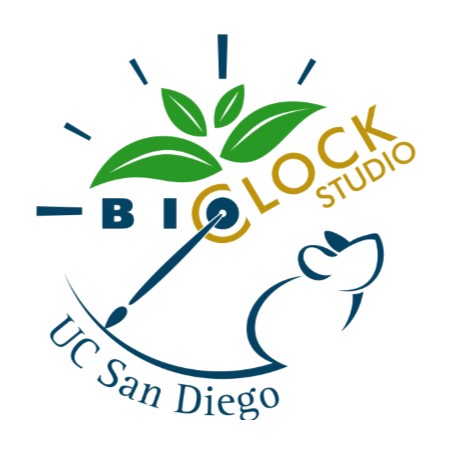Part 1: Introduction to Circadian -Omics and Applications
An overview of -omics approaches and experimental design of circadian studies in a “dry lab” format. It is the first in a series of four tutorials on how circadian data are analyzed from RNA sequencing results.
Click to copy citation:
Chan, B., Okamuro, K., Tong, N., Perelis, M., Tonsfeldt, K.J, & Golden, S.S [The BioClock Studio]. (2022, August 23). Circadian transcriptomics dry lab 1: Introduction to circadian “-omics” and applications [Video file]. Retrieved from https://youtu.be/CLmVGsj0A34.
Part 2: RNA Sequencing
A “dry lab” tutorial on preparation of samples for RNA Sequencing, genomic mapping, and normalization and transcript assembly from sequencing reads. We cover interpretation of read count, how to calculate reads per kilobase (RPK) values, scaling factors, and transcripts per million (TPM). This tutorial is the second in a series of four tutorials on how circadian data are analyzed from RNA sequencing results.
Click to copy citation:
Chan, B., Okamuro, K., Tong, N., Perelis, M., Tonsfeldt, K.J, & Golden, S.S [The BioClock Studio]. (2022, August 23). Circadian transcriptomics dry lab 2: Rna sequencing [Video file]. Retrieved from https://youtu.be/t4MhNElighI.
Part 3: Differential Expression & Circadian Analysis
Now that we have our RNA sequencing data, how do we determine differential expression between time and treatment groups? This tutorial explains how packages such as DESeq2 makes pairwise comparisons and how to interpret fold change and p-values of RNASeq results. We also describe circadian data analysis using MetaCycle to identify rhythmically expressed genes, as well as gene ontology approaches and interpretation.
Click to copy citation:
Chan, B., Okamuro, K., Tong, N., Perelis, M., Tonsfeldt, K.J, & Golden, S.S [The BioClock Studio]. (2022, August 23). Circadian transcriptomics dry lab 3: Differential expression & circadian analysis [Video file]. Retrieved from https://www.youtube.com/watch?v=KAEXR7LGisk.
Part 4: Visualization
The final part of the circadian dry lab series discusses how RNASeq and circadian data are visualized. The tutorial covers scatter plots, principal component analysis and PCA plots, heat maps, and volcano plots as valuable tools in visualizing data.
Click to copy citation:
Chan, B., Okamuro, K., Tong, N., Perelis, M., Tonsfeldt, K.J, & Golden, S.S [The BioClock Studio]. (2022, August 23). Circadian transcriptomics dry lab 4: Visualizations [Video file]. Retrieved from https://youtu.be/Z3YLdZIwGxw.

